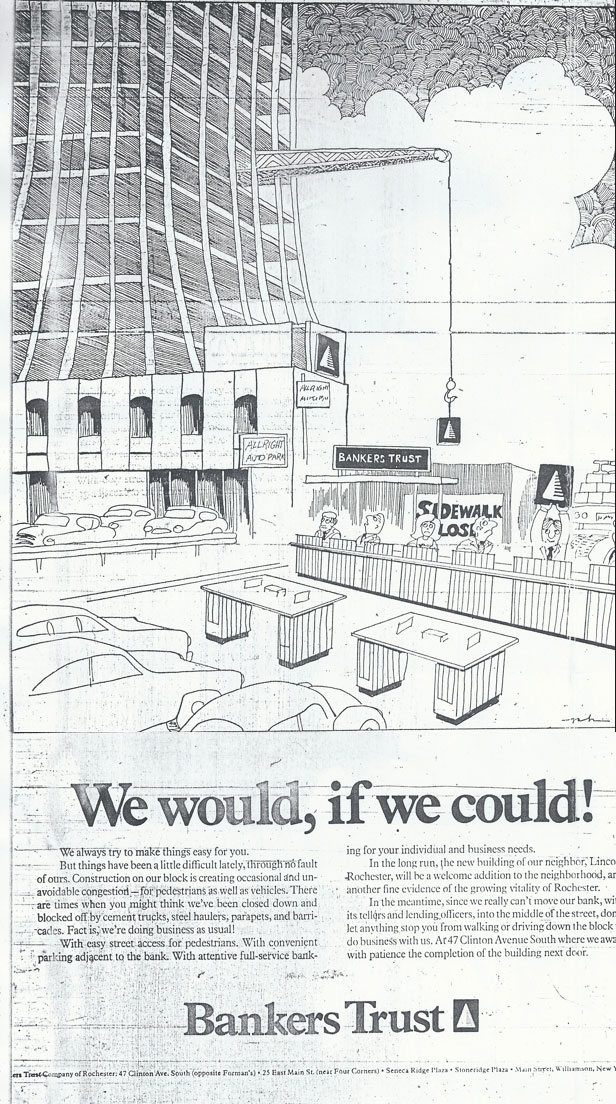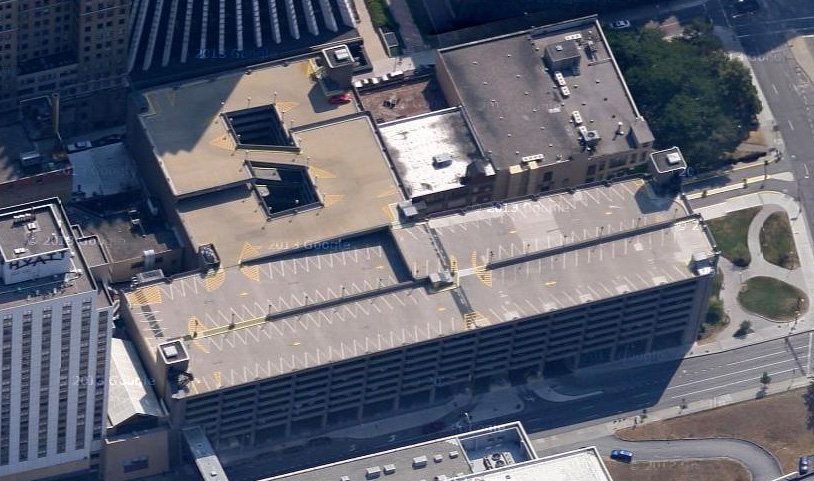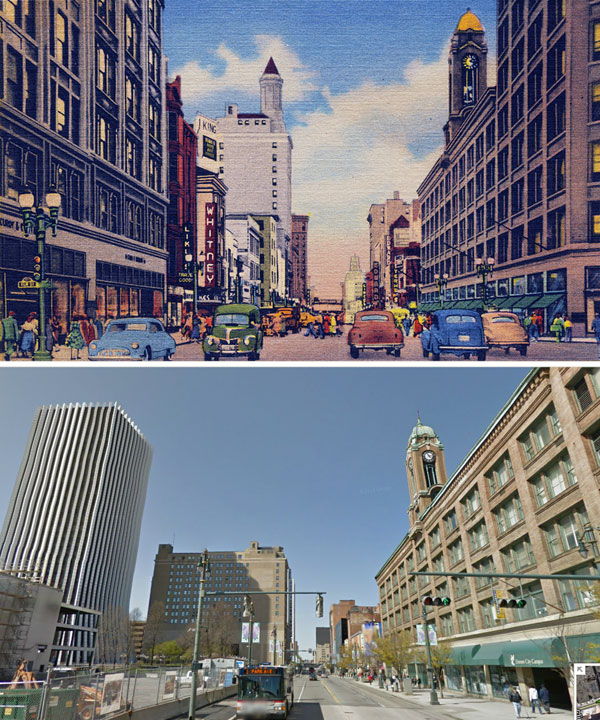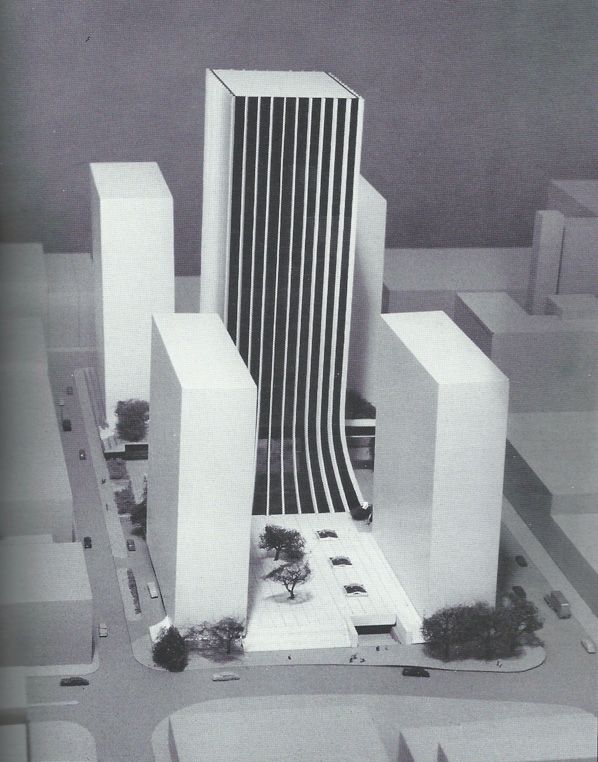This article was scraped from Rochester Subway. This is a blog about Rochester history and urbanism has not been published since 2017. The current owners are now publishing link spam which made me want to preserve this history.. The original article was published June 05, 2013 and can be found here.
![The Lincoln First Tower, now called Chase Tower was completed in the summer of 1972 at a cost of $20 million. It is 398 feet tall. [Looking North. Stone St. is on the left, and Broad St. on the bottom]](https://senseofplace.dev/content/images/photos/rochester-chase-tower-04.jpg)
The following is a guest post submitted by Jimmy Combs .
Submit your story today .
In 1970 a Lincoln Rochester Trust Co. advertisement in the Daily Record hailed, "Lincoln Tower... a tangible expression of our belief in the growth of Upstate New York... Through 1970 and beyond."
The Lincoln First Tower, now called Chase Tower

was completed in the summer of 1972 at a cost of $20 million. It is 398 feet tall. It contains about 356,000 square feet of office space. It is a big building. Just like the Xerox Tower , Chase Tower has roots in Seattle. John Graham and Company is an architecture firm based in Seattle...
![Chase Tower (on the right) has roots in Seattle. [PHOTO: Sm. Caruso, Flickr]](https://senseofplace.dev/content/images/photos/rochester-chase-tower-07.jpg)
John Graham is also Responsible for the design of the Space needle. It seems that he took some of what he learned about structural engineering from the innovative Space Needle and applied it in his design of Lincoln First Tower.
Lincoln Rochester made its first move towards a new building for its headquarters way back in 1960 by acquiring the old Temple Theatre

property. The public got a good idea of their plans in late 1967. The project was called Clinton Square and just about everyone was excited about it. The project included the main central tower and four smaller towers at each of the four corners. Three of them would be office, and one a hotel.
![Chase Tower is 398 feet tall. It contains about 356,000 square feet of office space. It is a big building. [Notice the man in the picture?]](https://senseofplace.dev/content/images/photos/rochester-chase-tower-03.jpg)
Not everyone was ready to completely forget about the buildings that would be demolished for the project. On December 20th, 1967 an article in the Democrat and Chronicle by Henry Clune was titled "Those were the Days Downtown". The article is about how the land Clinton Square was built on was once the most exciting part of downtown.
This area was once part of the old 4th Ward Theater District which included the Colonial on Main Street, the Temple

, the Victoria

and the Lyceum Theater

. Clune wrote "It was a place of entertainment at night as well as a lively trading mart during the day." Among the buildings that were demolished: Dake's Drug Store at Main and Clinton, and the Whitcomb house

.
The Clinton Square project basically demolished what little was left of it.

In the editorial column in the Democrat and Chronicle (December 19, 1967) an unknown person wrote "...the most thrilling private enterprise project in Rochester history, excepting not even famed Midtown Plaza and the Xerox complex." The problem with this statement is that the tower would likely not have been built if it were not for public investment as well.
Lincoln Rochester asked the city to build a parking garage for about 2,000 cars. Predictably the city agreed, and the price tag for the new garages and all the demolition ended up being about $15.9 million. Mayor Frank T. Lamb said that any new parking facility built "will be esthetically attractive; we want more than just a garage in this area."

To call the parking garages that were built "esthetically attractive" is certainly debatable. Technically the garages were a part of the Genesee Crossroads South Urban Renewal Project, but really they were built with Clinton Square in mind. According to the D&C a whopping total of 71 businesses would have to relocate when the Genesee Crossroads South Redevelopment was complete.
Demolition was considered for the Alliance building, and it seemed very likely that they would at least alter its facade to give it a modern look. That would have been tragic. They did remove the spire though...

For better or for worse, the city was already rapidly modernizing itself when Clinton Square was proposed. Some people believed that Clinton Square was an essential piece to the puzzle and when completed, Rochester might become a model city. The $5 million, 7 story Seneca Building directly across the street from the Lincoln First Tower was a part of the Clinton Square project. The covered pedestrian bridge connecting the two structures was an original and important part of the development. The idea was that one could walk from Lincoln First Tower to Midtown, Xerox or Sibley's without ever stepping outside.
Overall Chase Tower is a well done, unique modern skyscraper. It helps make Rochester look like a big city from far away and up close. I'm not sure what would be better to have, Chase Tower or the old buildings that were torn down including the ones demolished for the 2,000 parking spaces. I think it's a tough call.
Related:
In a recent tweet, D&C writer Steve Orr

reminded us of a Chase Tower "claim to fame": in the early 1980's the bank had to spend almost $20 million to replace the exterior marble tiles that covered its 27-story home office after those tiles started falling off! 203,000 square feet in all. See this story from the Chicago Tribune

. * * *
About Jimmy Combs:
Jimmy Combs is a 20 year old living in Penfield. He is obsessed with the city of Rochester and wants to help Rochester succeed in a major way, and bring it back to its former glory.


